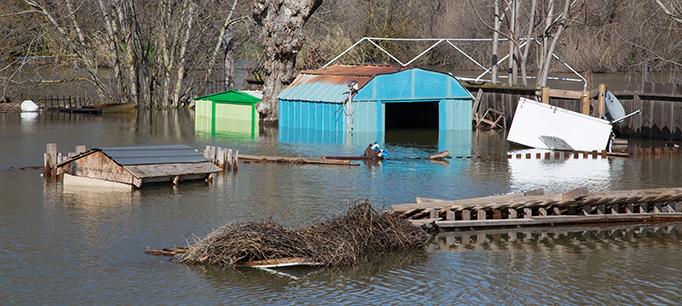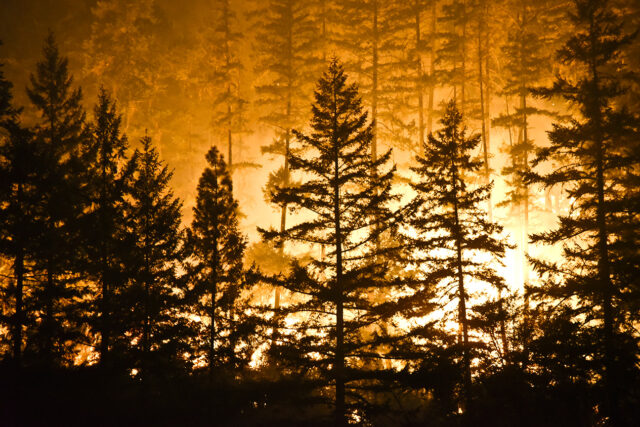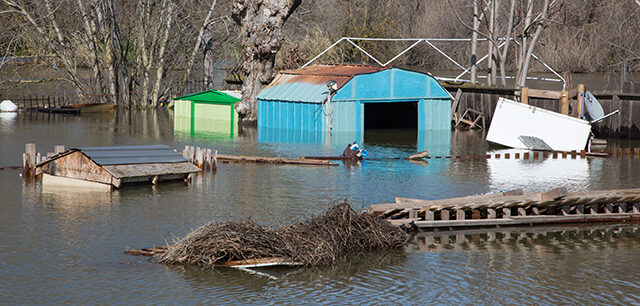First came the drought, then the floods: California has long bounced between the two weather extremes―most recently when the latest drought segued into 2017’s record-breaking rain and snow. Such “weather whiplash” could become much more common as the climate changes, according to a new study. We talked to Daniel Swain, a climate scientist at UCLA—and the study’s lead author—about what to expect.
 PPIC: California already has a highly variable climate. How will this be different?
PPIC: California already has a highly variable climate. How will this be different?
Daniel Swain: There will be much bigger swings between wet and dry years. We project a 25–100% increase in extreme swings in this century. On top of that we’ll probably see some changes in seasonality. While it will still be dry in summer and wet in winter, spring is likely to become considerably drier in most of the state, especially in the south. This will have big consequences for things like the snowpack and wildfire risk.
California’s human and natural systems can usually withstand the kind of variations we’ve seen in the past. But as the frequency and intensity of these swings increases, it could push some species to the edge. For example, the warming climate is already stressing our forests faster than they can adapt—we’re seeing a dramatic example of this right now with widespread Sierra Nevada tree mortality. And warming temperatures are making it difficult to manage for salmon and other fishes that rely on cold water.
It could be equally hard for the state’s water system to adapt to the bigger floods. Our big dams were designed to capture smaller floods than what we expect in the future. We can make some changes on the margins, but these structures were built for a climate that we no longer have.
PPIC: What is the most surprising thing about your findings?
DS: We were surprised by how much the risk for really severe flood events increases. We project a 300–400% increase in the likelihood of events similar to California’s 1862 Great Flood, which brought weeks of unrelenting rain and inundated much of the Central Valley. We found that it’s more likely than not that an event comparable to the 1862 flood will occur in the next 40–50 years. Keep in mind that there’s no modern precedent for this—it would exceed all previous tests of our flood management infrastructure.
It’s important to remember that we based our study on fairly pessimistic assumptions. If the world greatly reduces greenhouse gas emissions, California could see a smaller increase in extreme flood risk. But social and political factors will ultimately determine how much we reduce emissions in coming decades, so uncertainty remains.
PPIC: What is the key takeaway for water managers?
DS: We need to think about managing droughts and floods simultaneously, because some adaptations to help manage drought could make it harder to manage floods and vice versa. For example, increasing water stored behind California’s big dams gives us a nice buffer against a couple years of drought. But this saved water can become a liability because it reduces the reservoir space available to capture flood water. A higher risk of big floods necessitates bigger safety margins, which means storing less water behind dams for dry times.
One way to help manage this trade-off is to increase the use of natural floodplains to take up some of the water from big storm events. For example, Sacramento’s Yolo Bypass is intentionally inundated to protect the city from big floods. Another approach is to capture the water released from dams to make space for floods and store it underground. And when floods inevitably come, use flood waters to recharge groundwater.




